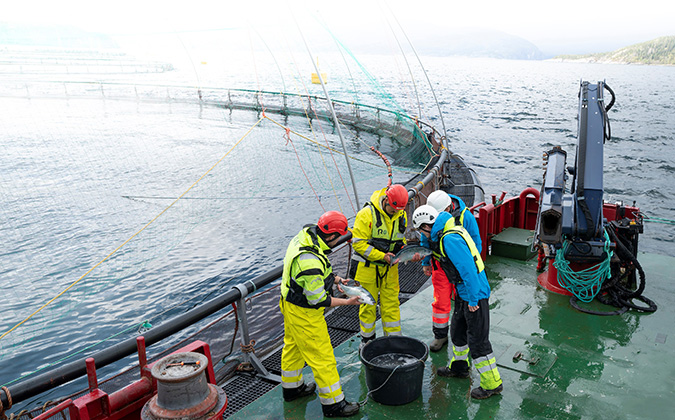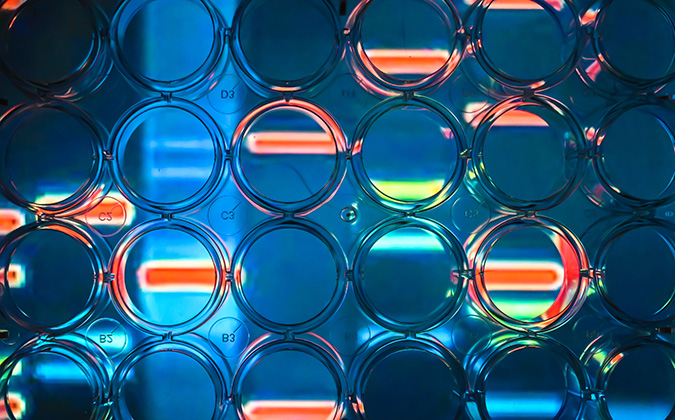
New tools can transform understanding of aquaculture’s microbiology
The microbiome of aquaculture systems has long been known to have a significant role in fish health and welfare issues, yet a full understanding of these interactions has often eluded experts.
Next-generation sequencing (NGS) is a molecular technology with a role to play in changing that. It allows for the screening of all microbes present in a specific environment, producing a large amount of data and setting it apart from current technologies like quantitative polymerase chain reaction (qPCR) testing.
PHARMAQ Analytiq has developed new diagnostic tools based on NGS, offering the aquaculture industry the option of deeper insight into the microbiological factors which can have a significant impact on production.
Addressing information gap
The service was inspired by a Norwegian project called MonMic, explained Stian Nylund, PhD, research and development manager for the company. This long-term work monitored microbiota in recirculating aquaculture systems (RAS).
“The results were very interesting and came with the recommendation that someone should do this on a larger scale, and more systematically, because this is just the tip of the iceberg,” Nylund said.
While NGS is an established technology with wide applications in both human and animal biology, to date, it has generally been used in Norwegian aquaculture as a means of identifying and characterizing pathogens, with nothing established on a commercial scale for a more all-encompassing view of the microbiome.
RAS focus – but broader uses possible
Initially, the primary application of the tools will be in RAS, due to the high level of control closed and semi-closed production systems offer. However, other potential uses are in characterizing the microbiota involved in skin ulcers and gill disease, molecular tracing of pathogens and environmental monitoring of the seabed near fish-farming sites.
Monitoring biofilters is of particular interest to customers with RAS, Nylund said, with low bacterial diversity a sign that they are not working as they should, and unbalanced microbial communities affecting water quality and fish health. Such monitoring can also help producers optimize biofilter cleaning processes.
“The good thing with looking at the biofilters over a long period of time is that when you also monitor the production, you can actually start to point out which one of these parameters affects the changes in the microbiome,” he said.
When looking at the factors behind fish ulcers, NGS provides new levels of insight.
“When we looked at NGS on bacterial composition in ulcers, the results were quite different from what we found using standard microbiology or qPCR, because not all bacteria grow evenly on bacterial cultures. But you don’t have to worry about that bias when sequencing directly from an ulcer, because you get all of them,” he continued.
Bringing clarity from big data
Collecting large amounts of genetic information can lead to challenges in interpretation — meaning close cooperation with producers is essential, explained Helene Bevan, laboratory engineer for PHARMAQ Analytiq.
“Because there’s so much data being generated, the potential is quite enormous. It’s very important for us to have that contact with customers, to figure out what they are actually looking for and what is the potential of using the technology,” she said.
“The aim is to gather these ‘stories’ and come up with new ways of utilizing the data. In the analysis, we will narrow it down and try to answer very specific questions.”
What is ‘normal’ in microbiomes?
Establishing what the baseline is for a “normal microbiome” is also a challenge but essential for comparisons should fish health and performance change. To provide context, the PHARMAQ Analytiq team undertook a period of intensive monitoring of a customer’s whole RAS, including the tanks, filters, water and fish. Ultimately, such calculations will be done on a case-by-case basis.
“One of the findings of the MonMic report was that every site seems to be different in terms of its microbial content, which means that we have to establish a baseline for every site,” Nylund explained.
“We have to know what it looks like on a good day, so then we can compare the results when things are going wrong. Whenever we have deviations from what is considered normal, we can log that in our dataset.”
NGS fits into bigger picture
The new service will be largely using the Illumina MiSeq system, which can handle large amounts of data, though other technologies such as nanopore sequencing will also be used for research work. NGS will stand on its own, while also being available as part of a broader package of diagnostics.
“The strength we will have with this is in combining multiple products: histology, microbiology and qPCR with the NGS, to get the broader picture of what’s going on with the customers,” Bevan continued.
With new molecular data available using the approach, the value of having company data on production parameters on hand at the same time should not be underestimated, Nylund added. This allows for a full picture of all relevant factors involved in rearing fish, providing clear insight into what is happening, and what can be changed to improve the situation when performance drops below optimum.






